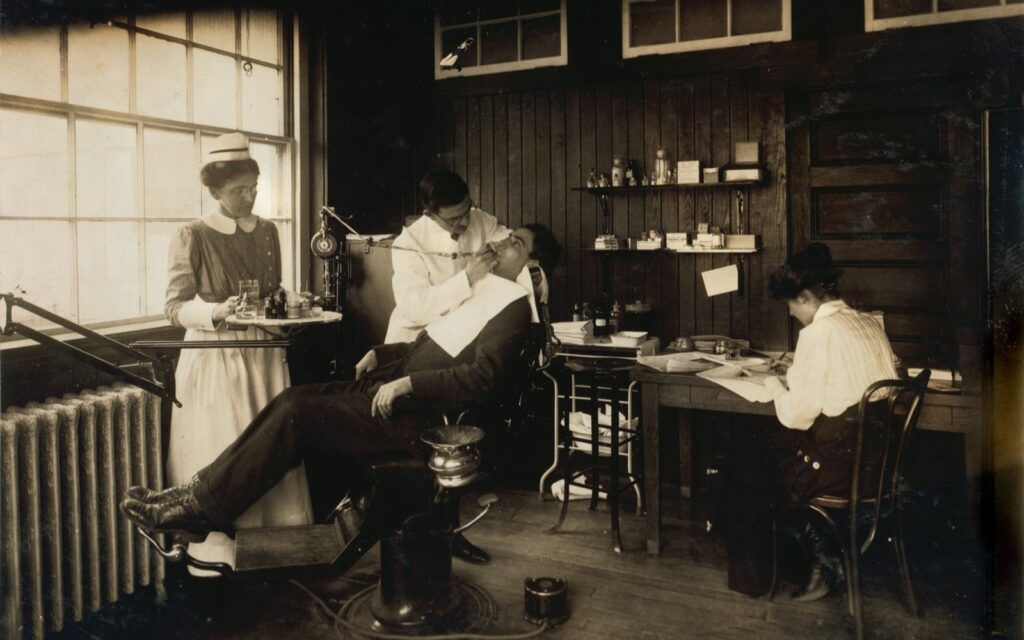The search for better dental anesthesia has been a continuous journey for those in the field. In the beginning, solutions for anesthetic options likely began in pre-history. The first-known records of it come from Egypt. In the Medieval era, Europe’s use of anesthesia in varying practices was incredibly well documented. However, in many ways, it has remained unchanged, and today, we’ll be taking a brief look at how anesthesia’s evolved and helped advance dentistry.
Anesthesia’s Evolution In Dental History
Numerous forms of anesthesia have seen frequent usage throughout ancient history. Narcotics were a typical standard, usually in the form of opium. Herbal approaches such as henbane were also used. One common anesthetic used throughout the ages was strong alcohol. These were effective to various degrees but usually had dangerous side effects, especially their addictiveness.
These approaches to dental anesthesia would continue for thousands of years until the arrival of the 18th and 19th centuries. During these times, doctors of varying professions made numerous steps in the areas of medicine and the usage of anesthetics. Through experimenting and experience, doctors utilized three standard methods of treatment. However, two of these forms would quickly become obsolete or illegal, while some forms remain in use today.
- Cocaine – A narcotic well-known for its capability to dull sensation and soothe patients during treatment. However, it was also incredibly addictive and could result in lasting problems with dependency in the patient. This dependency was aggravated because it wasn’t illegal and could be obtained from any pharmacist. Originally, the first use of cocaine was from an opthalmologist; where in 1884, opthalmologist Koller used cocaine for topical anesthesia in ophthalmological surgery. During that same year, cocaine was used as regional anesthesia, performed by the surgeon Halsted, where he removed a wisdom tooth without pain.
- Morphine – Doctors often use another narcotic to treat pain in patients. Its effects are powerful, making the treatments almost painless. However, it shared the addictive quality associated with all narcotics, including the cooperation between Dr. Koller and Sigmund Freud in their relative interests in pain relief and psychology. Many surgeons throughout this time were interested in the effects of morphine. In 1845, Irish surgeon Francis Rynd of Meath Hospital described two cases in which he injected morphine acetate (which he called “acetate of morphia”), developing the design of his syringe and then publishing its design in 1861. Today it is only used in severe pain or where other approaches do not work. It has no use in modern dentistry.
- Ether – This treatment is an alcohol that is often mixed with waxes, resins, and gums for industrial applications. However, it also can render patients unconscious for the delivery of dental care. In 1846, Dr. William Thomas Green Morton turned to ether as a gaseous solution for the anesthetic problem, using it for minor surgeries in dentistry for tooth extractions and pulpotomies. Unfortunately, it was also seen to cause respiratory paralysis, unconsciousness, and drunkenness, as shown in later studies conducted by the same dentist. These properties led to it being taken out of use.
The one medication invented during this time that has remained a mainstay of dental care is nitrous oxide. Nitrous oxide, also known as laughing gas, provides a euphoric high for patients. It’s not a pain killer but reduces stress and anxiety while leaving the patient conscious. This stress reduction has the ancillary effect of altering the patient’s perception of pain, making it less impactful.
The Use Of Anesthetics In Modern Dentistry
Since the initial age of medicine and anesthetics, tremendous leaps have been made in pain control technology. Those seeing dentists in a modern setting will receive local anesthetics such as Novocain. This numbing agent is harmless, non-addictive, and decidedly practical. More advanced treatments may require more potent anesthetics delivered by a qualified anesthesiologist. Speak to your dentist about your upcoming dental care and ask what forms of anesthesia are available and may be required for your treatment.
If you feel insecure about your smile and wish to learn more about your options for anesthesia, speaking with your primary care dentist first can help you address any oral health problems you may experience so you can learn about your treatment options. By speaking with your dentist, they can provide treatments for any insecurities you may have about your smile and use only the finest aesthetics to help you experience quality dental care pain-free. By working with your dental team, they can provide you with the best options out there for treatment that helps you feel more like yourself and with an excellent smile for life. For more information about anesthetic options, treatments, and other aspects of your dental care, contact your primary dentist; they can help you get started immediately!



